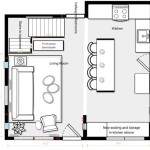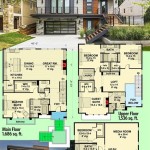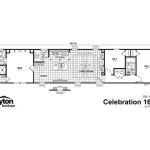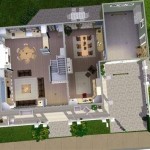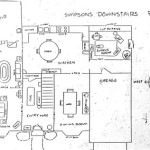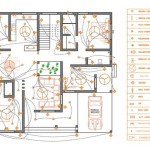House Construction Plan for 720 Sq Ft
Constructing a house requires meticulous planning, especially when working with a specific square footage. A 720 sq ft house offers a compact yet comfortable living space, ideal for individuals, couples, or small families. This article explores key considerations for developing a construction plan for a house of this size.
Space Optimization: Maximizing the available space is crucial in a 720 sq ft house. This involves careful consideration of the layout, prioritizing functionality and efficient use of every square foot. Open floor plans can create an illusion of spaciousness by combining living, dining, and kitchen areas. Multi-functional furniture, such as sofa beds and expandable dining tables, can further optimize space utilization.
Budgeting and Cost Estimation: A detailed budget is essential before commencing construction. Factors influencing the cost include land acquisition (if applicable), materials, labor, permits, and professional fees. Obtaining accurate cost estimates from contractors and suppliers is vital for effective budget management. Exploring various material options and construction techniques can help optimize costs without compromising quality.
Design and Layout Considerations: The design and layout should reflect the specific needs and lifestyle of the occupants. Consider the number of bedrooms and bathrooms required. A two-bedroom, one-bathroom layout is a common choice for this size. Prioritize natural light and ventilation to create a bright and airy atmosphere. Incorporate storage solutions strategically throughout the house to maintain a clutter-free environment.
Material Selection: Choosing appropriate building materials is crucial for durability, aesthetics, and cost-effectiveness. Consider factors such as climate, local building codes, and maintenance requirements when selecting materials for the foundation, walls, roof, and flooring. Sustainable and energy-efficient materials can contribute to long-term cost savings and environmental responsibility.
Regulatory Compliance and Permits: Before starting construction, ensure compliance with local building codes and regulations. Obtain the necessary permits from the relevant authorities. This involves submitting detailed plans and specifications for review and approval. Adhering to regulatory requirements is crucial for avoiding legal issues and ensuring the safety and structural integrity of the house.
Foundation and Structural Design: A solid foundation is essential for the stability and longevity of the house. The type of foundation will depend on factors such as soil conditions and local building practices. Common foundation types include slab-on-grade, crawl space, and basement. The structural design should be engineered to withstand local climate conditions, including wind loads and seismic activity.
Plumbing and Electrical Systems: Planning the plumbing and electrical systems is a crucial aspect of the construction process. Determine the location of fixtures, outlets, and appliances. Ensure compliance with plumbing and electrical codes. Consider incorporating energy-efficient fixtures and appliances to reduce utility costs.
HVAC and Insulation: An efficient heating, ventilation, and air conditioning (HVAC) system is essential for maintaining comfortable indoor temperatures. Proper insulation can significantly reduce energy consumption and improve thermal comfort. Consider factors such as climate zone and energy efficiency ratings when selecting HVAC equipment and insulation materials.
Interior Finishes: Interior finishes contribute significantly to the aesthetics and functionality of the house. Select flooring, wall coverings, and paint colors that complement the overall design and create a cohesive look. Prioritize durability and ease of maintenance, especially in high-traffic areas.
Exterior Finishes: The exterior finishes protect the house from the elements and enhance its curb appeal. Consider materials such as siding, roofing, and exterior paint that are durable, weather-resistant, and aesthetically pleasing. Factor in the local climate and architectural style when selecting exterior finishes.
Landscaping and Outdoor Spaces: Even with a smaller footprint, outdoor spaces can be incorporated into the design. A small patio, deck, or balcony can provide an area for relaxation and outdoor dining. Landscaping can enhance the curb appeal and create a welcoming environment.
Construction Timeline and Project Management: Develop a realistic construction timeline that includes all phases of the project, from site preparation to final inspections. Effective project management is crucial for staying on schedule and within budget. Regular communication with contractors and suppliers is essential for smooth project execution.
Quality Control and Inspections: Regular inspections throughout the construction process are essential to ensure quality control and compliance with building codes. Engage qualified inspectors to verify the structural integrity, plumbing, electrical, and HVAC systems. Address any deficiencies promptly to avoid costly rework later.
Building a 720 sq ft house requires careful planning and execution. By addressing these key considerations, individuals can create a functional, comfortable, and aesthetically pleasing home that meets their specific needs and budget.

720 Sq Ft Small Contemporary House Plan 1 Bedroom Bath

House Plan 86902 One Story Style With 720 Sq Ft 2 Bed 1 Bath

House Plan 5633 00014 Ranch 720 Square Feet 2 Bedrooms 1 Bathroom Small Floor Plans Tiny Style

36x20 House 2 Bedroom Bath 720 Sq Ft Floor Plan Model 1e

House Plan 45394 Country Style With 720 Sq Ft 2 Bed 1 Bath

720 Sq Ft Small Contemporary House Plan 1 Bedroom Bath

30x24 House 1 Bedroom Bath 720 Sq Ft Floor Plan Instant Model 6f

House Plan 58509 Country Style With 720 Sq Ft 2 Bed 1 Bath

720 Sq Ft Small Contemporary House Plan 1 Bedroom Bath

36x20 House 2 Bedroom Bath 720 Sq Ft Floor Plan Instant Model 3b Guest Plans Tiny Small

